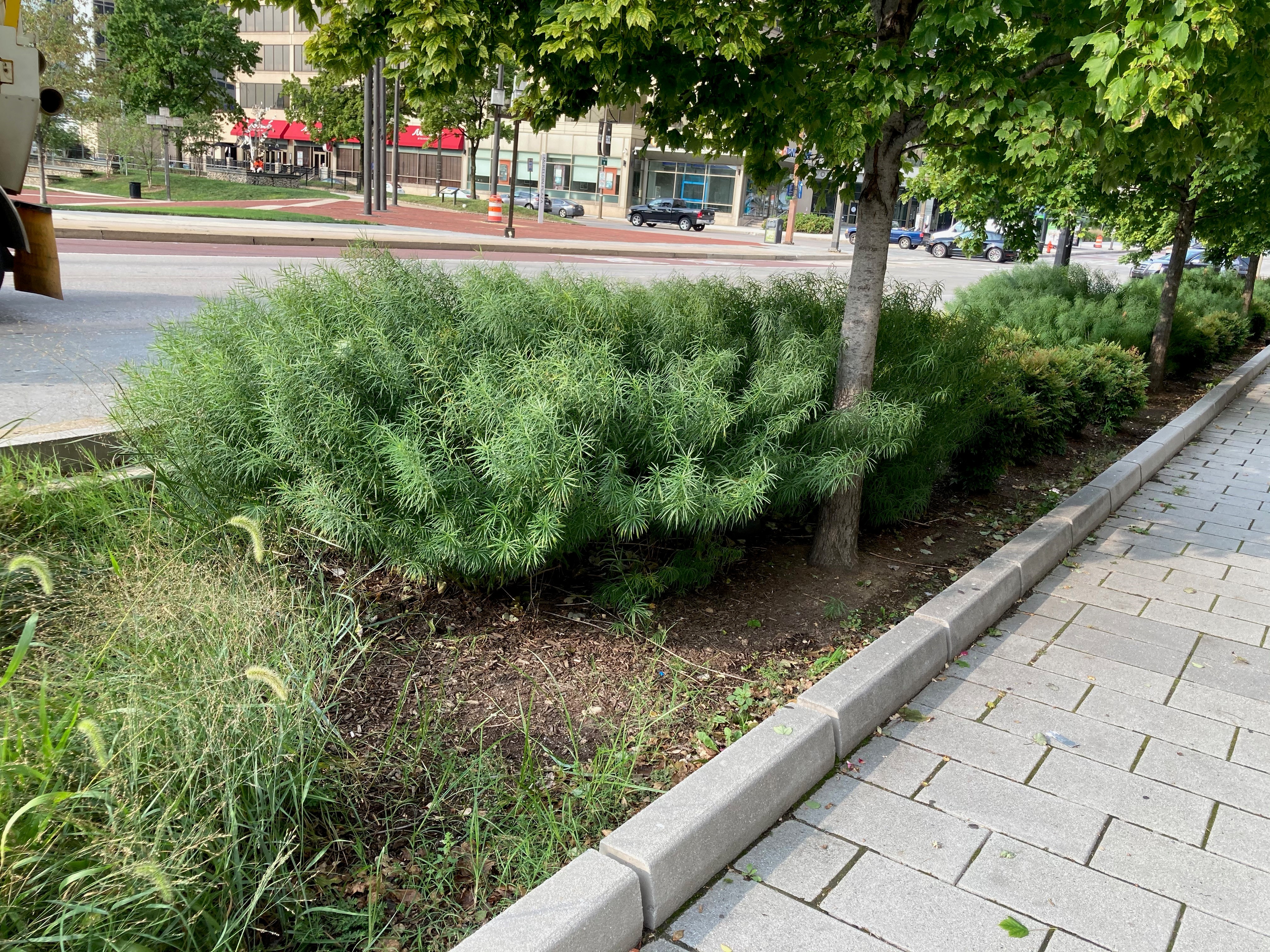
Bioretention Areas
Stormwater
Source Water Recharge
Combined Sewer Overflows
Bioretention areas are shallow, landscaped depressions that allow runoff to pond in a designated area, then filter through soil and vegetation. Small-scale bioretention areas are also known as rain gardens. Residential or commercial rain gardens are designed to capture and soak in stormwater. Implement bioretention and rain gardens to promote biological treatment with soils and vegetation
Requires proper plant selection and maintenance.
The surface area of the bioretention system should be between 5 to 10 percent of the impervious area it is draining. Bioretention areas are best applied to areas with relatively shallow slopes (usually about 5 percent or less). Bioretention areas can be applied in almost any soils as runoff percolates through a made soil bed and is returned to the stormwater system. It is also possible to design a bioretention system like an infiltration system. Bioretention should be separated from the water table to ensure that the groundwater does not intersect with the bottom of the bioretention area. A typical bioretention system involves the following components: Pretreatment: Because bioretention areas are susceptible to clogging from sediments, pretreatment to remove suspended sediments is recommended. Ponding area: A ponding area provides surface storage of stormwater before it filters through the soil bed. Organic mulch layer: This layer protects the soil layer from erosion, retains moisture to sustain plants, and provides a medium for biological activity to decompose organic pollutants and adsorb inorganic pollutants. Planting soil bed: Provides water and nutrients to support plant life in the bioretention system. Stormwater filters through the planting soil bed where pollutants are removed by sorption and biodegradation. Under-drain: An under-drain is a perforated pipe in a gravel bed installed along the bottom of a sand bed to collect and filter stormwater directing it to an outflow or stormwater systems. Provide redundant overflow structures to convey flow from large storms tot he storm drain system. Plants: Plants are an important component of a bioretention system. They remove water through transpiration, remove pollutants, enhance soil biological activity, and promote water infiltration. The plant species selected should replicate a native forest or grassland system, and be able to survive flooded conditions.
Typical costs can be from $0.50 to over $1.00 per cubic foot (USEPA, 1999). Cost range reflects economies of scale in designing detention basins.
Provides effective stormwater flood control by slowing down runoff and increasing water infiltration into the soil; Minimally consumes land; Reduces site runoff; Provides aesthetic enhancement; Increases groundwater recharge; Can be used as a stormwater retrofit.